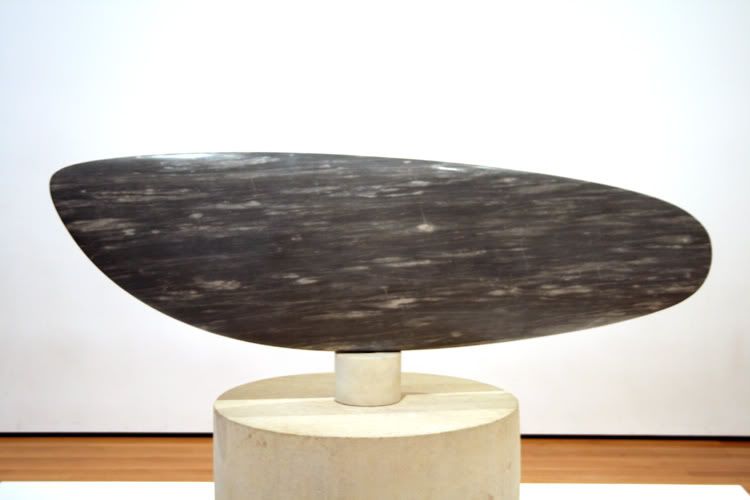That would make a nice asymmetrical hull.
MOMA’s collection also features a wetsuit-like objet:

Vent Design
Stephen Peart. British, b. 1958
Bradford Bissell. American
“Animal” Wet Suit. 1989 (1988)
Molded neoprene, thermoplastic elastomer, nylon jersey, and Delrin zipper
zipper
Manufactured by O’Neill, Inc., United States
Lent by Vent Design, Campbell, Calif.
(photos courtesy Vent Design)
Mutant Materials in Contemporary Design
Rubber and Foam
[=Black][=1][ 3] Rubber and foam is a wide-ranging category that encompasses various materials and technologies, including natural and synthetic rubbers, gels, foams, and air- or gas-filled bladders. The softness and flexibility of such materials make them particularly useful for objects engineered to adapt comfortably to the human body.[/] [/][/]
Thermoplastic elastomers (TPEs) are synthetic rubbers that can be formed into complex shapes with processes similar to those used for plastics, such as injection- and blow-molding. Although they were first discovered in the 1950s, TPEs were not widely introduced until quite recently.
Polyurethane, an endless source of innovation, has been used to create a huge diversity of objects. Soft polyurethane and polyurethane foam are represented in the exhibition by such objects as vases, sofas, armchairs, and lumbar supports. High-memory thermoreactive foam, a material that is activated by body heat and can remember the user’s shape, is a recent development adapted from the aerospace industry. Other applications, like the gas- or air-filled polyurethane bladders used in sports equipment and walking shoes, have been developed by designers to improve softness and bounce.
Silica and silicone also lend themselves to diverse applications. The material appears in the exhibition in the form of aerogels, jellyfish-like substances that are lighter than air; gels, which are used for cushions and pads; and elastomers, which serve as an elastic diffuser of light sources. As a group, the objects in this section display an interest in the design of comfort, a development that has greatly benefited from the ongoing research being conducted on materials.
©1995 The Museum of Modern Art, New York


 zipper
zipper